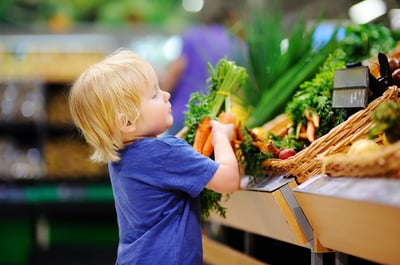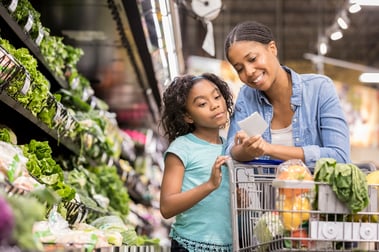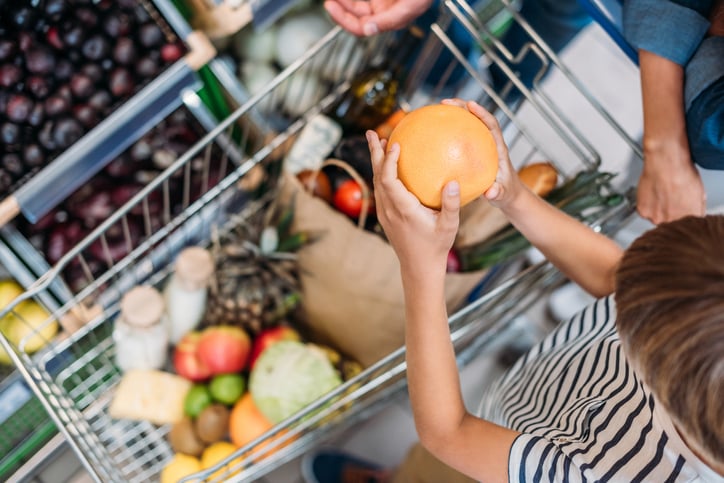8 Tips for Tackling the Grocery Store With Your Autistic Child
Working in early intervention, I am always checking in with parents regarding their triumphs and their struggles, and one struggle that comes up frequently is that intimidating trip to the grocery store. In general, any parent worries about being looked upon with judgment when a child acts out in a public place. The implication is that they are somehow to blame, that they are raising unruly children or lacking in parenting skills. The world can be an overwhelming place for any child, but this is especially true for autistic children, and that can make a trip to the store especially daunting.
 Before I entered the field of early intervention, I worked as a nanny to a beautiful blonde-haired boy who was diagnosed as autistic around the age of two. We took many trips to the grocery store, restaurants, and places such as the Children’s Museum. Each one was filled with anxiety, and I will be honest, we had very few triumphs. I started documenting things that worked and things that did not. Now I share these DOs and DON’Ts with other parents.
Before I entered the field of early intervention, I worked as a nanny to a beautiful blonde-haired boy who was diagnosed as autistic around the age of two. We took many trips to the grocery store, restaurants, and places such as the Children’s Museum. Each one was filled with anxiety, and I will be honest, we had very few triumphs. I started documenting things that worked and things that did not. Now I share these DOs and DON’Ts with other parents.
The grocery store presents a variety of obstacles for autistic children. They are big, bright, loud, busy, and can often be cold. Autistic kids thrive the most with strict routines that are familiar and where they can anticipate what comes next. Any deviation from that routine may present challenges, and grocery stores are filled with challenges!
While every autistic child has their own unique set of gifts and challenges, these children often do not have the same coping skills needed to adjust to changes and transitions. You cannot expect your autistic child to accept a bribe in exchange for calming down, or to just “get over it!” Autism takes parenting to a whole new level!
Let me provide some tips for getting through the dreaded grocery store trip with more confidence and less anxiety!
1. Make a List
 You may think that a grocery list is a given, and while that is important for staying organized, I am talking about another type of list. A list of obstacles or challenges that have presented themselves in past shopping trips. This list may include things like bright lights, loud noises, cold temperatures, or a certain snack or treat frequently requested. Think about all of the things that have gone wrong in the past and write them down. Maybe it occurs before you even get to the store.
You may think that a grocery list is a given, and while that is important for staying organized, I am talking about another type of list. A list of obstacles or challenges that have presented themselves in past shopping trips. This list may include things like bright lights, loud noises, cold temperatures, or a certain snack or treat frequently requested. Think about all of the things that have gone wrong in the past and write them down. Maybe it occurs before you even get to the store.
2. Pack for Your Trip
Go over your list carefully! Take note of things you may be able to control, such as bringing a sweater or small blanket for the freezer/dairy aisles, trying out sunglasses or noise-canceling headphones, and making sure you have a drink and a snack. A little trick I learned is to have one highly preferred snack that is only for grocery store trips. This makes it extra special! Some little ones may also feel comforted by bringing a favorite toy or stuffy. If you have a young one who rides in the cart, this may present a sensory issue. If the cold metal is an issue, try bringing a pillow, a blanket, or an infant insert for your child to sit in/on. Observe the environment and instances that are challenging and try to eliminate those struggles before they are a problem next time.
3. Prepare Your Child
Talk to your child about when and where you will go shopping and some things you may need. Let them know what to expect and let them know what you expect. Use social stories or sequencing cards to rehearse what your child can expect in the store.
4. Discuss Reinforcements
Set small goals! You can use a timer to set short intervals, such as five minutes at a time. Your little one may earn a small reward or token each time they successfully finish the interval. They may turn in their tokens for a reward after leaving the store. Choose appropriate rewards that will help your child continue building good behaviors.
5. Start With Shorter Shopping Trips
Start by taking a shorter trip to the store. We started by making shorter trips but still going through the whole store. I grabbed fewer things the first couple of times and added in more items each trip so that each trip was a little longer. If there is a real aversion you may start with just grabbing one or two things, and skipping some of the inside aisles.
6. Form a Routine in the Store
 Remember that autistic children thrive with schedules and routines. You can try to incorporate some sort of routine into your shopping trip. I like to go the same way every time we shop. I start with going up and down the inside aisles in the same direction every time, then the bakery/deli, and then the produce and dairy sections. For us, the cold aisles were a trigger, so I tried to save those for last. Maybe baked goods are a trigger for your child, so you may want to save that area for last.
Remember that autistic children thrive with schedules and routines. You can try to incorporate some sort of routine into your shopping trip. I like to go the same way every time we shop. I start with going up and down the inside aisles in the same direction every time, then the bakery/deli, and then the produce and dairy sections. For us, the cold aisles were a trigger, so I tried to save those for last. Maybe baked goods are a trigger for your child, so you may want to save that area for last.
7. Add in Food Cards
I use a short grocery list with pictures of things we need every week, such as apples, bananas, and milk. I also try to make sure that the items are always stocked to eliminate frustration over an out-of-stock food item. You could also try picture cards in a coupon or receipt book as opposed to one list. This works very well for children who may like to put the cards in and take them out. I also laminate mine, so that it cannot as easily be damaged.
8. Provide Verbal Praise
Do not forget to offer verbal praise. If using the interval system, you may offer verbal praise and a high five or short hug if desired after each successful interval. If the interval is unsuccessful, just start the timer over. Do not discourage the child with negative words or phrases, such as trying again or maybe next time.
I want to encourage you to keep venturing out! Exposure to different environments provides learning experiences for children. It is one of the best things you can do for your child! Also, remember that you are not alone! Connect with others who may be experiencing the same thing via local support groups or social media platforms!

Marianne Coppola
Marianne Coppola, MHA, ABA works as a child development specialist with toddlers and pre-schoolers. She is passionate about early intervention and finding creative and engaging ways to help children reach developmental milestones. Her work extends to children diagnosed with Autism Spectrum Disorder, Attention Deficit Hyperactivity Disorder, Sensory Processing Disorder, Social Anxiety, and Motor Development Delays. She holds an M.A. in Healthcare Administration, and an M.A. in Special Education and Applied Behavior Analysis. She is currently studying to become a Board-Certified Behavior Analyst and is pursuing a PhD in Behavioral Health.





